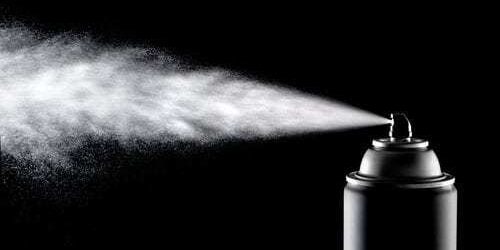Powder coating is a finishing process renowned for its durability, longevity, and aesthetic appeal. A powder coat can provide a range of products with a resilient finish that withstands wear and tear far more effectively than traditional paint. However, even the toughest coatings can occasionally suffer damage from scratches, nicks, and prolonged exposure to harsh weather.
In this article, we’ll guide you through the process involved in powder coating surface repair, drawing on our expertise in the industry to share our top tips and guidance for success. You’ll learn everything you need to keep your powder-coated surfaces in top condition.
Understanding Powder Coated Surface Damage
Powder coat finishes are notoriously durable. They’re excellent at protecting products from long-term damage caused by corrosion, exposure to harsh conditions, and more. However, even the best powder coat isn’t entirely immune to damage.
Over time, surfaces can be exposed to various types of damage, including:
- Scratches: Powder coated surfaces exposed to sharp objects, from keys and metal, to other items, can scratch and scuff a powder coated surface. Improper handling is a common cause of scratches. Though some scratches are minimal, deep abrasions can expose the underlying surface of an object to additional damage, such as rust and corrosion.
- Chips: Powder coatings are extremely difficult to chip, thanks to their smooth, strong finish. However, wear and tear can cause portions of a coat to be knocked loose over time. This kind of damage is particularly common for powder coated products in high-traffic environments, such as furniture that’s regularly exposed to knocks and bumps.
- Fading: Harsh weather conditions and strong UV light can gradually harm the aesthetic appeal of powder coated products, causing colors to fade and dull. Fading is a commonplace concern for powder coated products regularly exposed to the outdoors, such as powder coated outdoor furniture or automotive parts.
The Powder Coated Surface Repair Process
When a powder coating is damaged, the last thing you want to do is damage the integrity and aesthetic appeal of an item by simply patching it up with paint. To keep underlying metal and other materials protected, and preserve the visual impact of powder coated items, you need a meticulous powder coated surface repair process.
Here are some of the steps we follow at PowderCoat Services when repairing powder coated items, and some top tips to help you make the most out of your finish.
Step 1: Preliminary Assessment
The first step in the powder coated surface repair process is usually a careful assessment. This allows an expert to determine whether the surface can be repaired effectively, without the need for re-coating. Specialists visually inspect the surface for scratches, chips and fading, using magnifying glasses and other tools to check the depth and extent of the damage.
Step 2: Surface Preparation
Thorough surface preparation is often crucial in various powder coating processes. Before a repair, the surface and parts need to be cleaned thoroughly to remove dirt, grease, and contaminants. Effective cleaning will help to eliminate any components that may hinder adhesion of a new powder coat, or cause issues with the repair process.
Experts may use solvents like isopropyl alcohol or acetone to clean the surface, or use mild abrasives to remove stubborn grime and rust. The area may also be sanded slightly to remove rough edges, and create a suitable texture for the repair material to adhere to.
Step 3: Using Repair Techniques
Depending on the extent of the damage, there are various powder coated surface repair techniques professionals can use to revitalize the finish. For minor damage, such as tiny scratches and chips, powder coating pens and sprays are an effective option, allowing for a precise application of additional powder molecules.
For deeper chips and scratches, filler compounds, specifically designed for powder coated surfaces are excellent for creating a smooth, final finish. After the right repair techniques are applied, heat guns and infrared (IR) lamps can be used to cure the piece, ensuring the new powder adheres fully to the rest of the product, and reducing the risk of further damage.
Step 4: Blending and Finishing
An effective powder coated surface repair process should leave your product looking brand-new, with no obvious gaps or color inconsistencies.
Professional powder coat experts use blending techniques, such as light sanding to ensure the repaired component adheres with the look and finish of the rest of the coat. Finishing touches can also be applied, such as a clear coat, or matching topcoat, to protect the repair, enhance its durability, and improve its aesthetic appeal.
Following the blending and finishing process, the parts should be allowed to cure completely, before an additional inspection is conducted to check for any remaining imperfections.
Step 5: Preventive Measures
Whether you’ve just repaired a powder coated surface, or applied a fresh coat to a new product, implementing the right best practices can help to reduce the risk of future damage. Here are our top tips for extending the life of your powder coated parts:
- Handle powder coated products carefully: Avoid rough handling and impact during transportation and installation. Inspect items in high-traffic areas regularly for any signs of damage, and apply repairs quickly to prevent damage increasing.
- Regularly clean the parts: Cleaning surfaces regularly with mild soap and water can remove dirt, contaminants, and chemicals that might harm the surface, or cause fading. Avoid harsh chemicals or abrasive cleaning tools that may degrade the coating.
- Apply the right protections: For powder coated items exposed to harsh weather conditions, additional protections can be helpful. Using covers, or applying sealing topcoats can prevent UV damage, and corrosion over time.
- Invest in regular maintenance: Inspect surfaces regularly for signs of damage, wear and fading, and perform timely touch-ups on small scratches and chips to maintain the coating’s integrity.
When to Seek Professional Help
Some forms of minor damage to powder coated surfaces are relatively easy to fix with powder coating pens and sprays. However, there are instances where professional assistance is essential. In instances where parts have been exposed to significant damage or corrosion, the guidance of an expert is invaluable. Consulting with powder coating experts such as PCS will ensure you get:
- Crucial expertise: Powder coating professionals can handle complex repairs effectively, preserving and improving the appearance and durability of your finish.
- Quality: Experts can leverage specialized equipment and high-quality materials to restore surfaces to their original condition, enhancing the final results of your repair.
- Efficiency: Professional service can protect you from making costly mistakes that may lead to the need for an entirely new powder coat. They can also apply long-lasting solutions during repairs, reducing the need for future touch ups.
Preserve Your Powder Coated Parts
Although powder coating adds an extremely durable finish to any surface, from metal parts to furniture, these coats can still occasionally suffer from damage. Approaching powder coated surface repair the right way is crucial to preserving the longevity of your finish.
Working with experts like PowderCoat Services will ensure you can restore any damaged parts to their original condition, replenishing their visual appeal and durability.
Contact PowderCoat Services today to learn more about how we can assist with your repair needs, or ask about our complete range of services.







